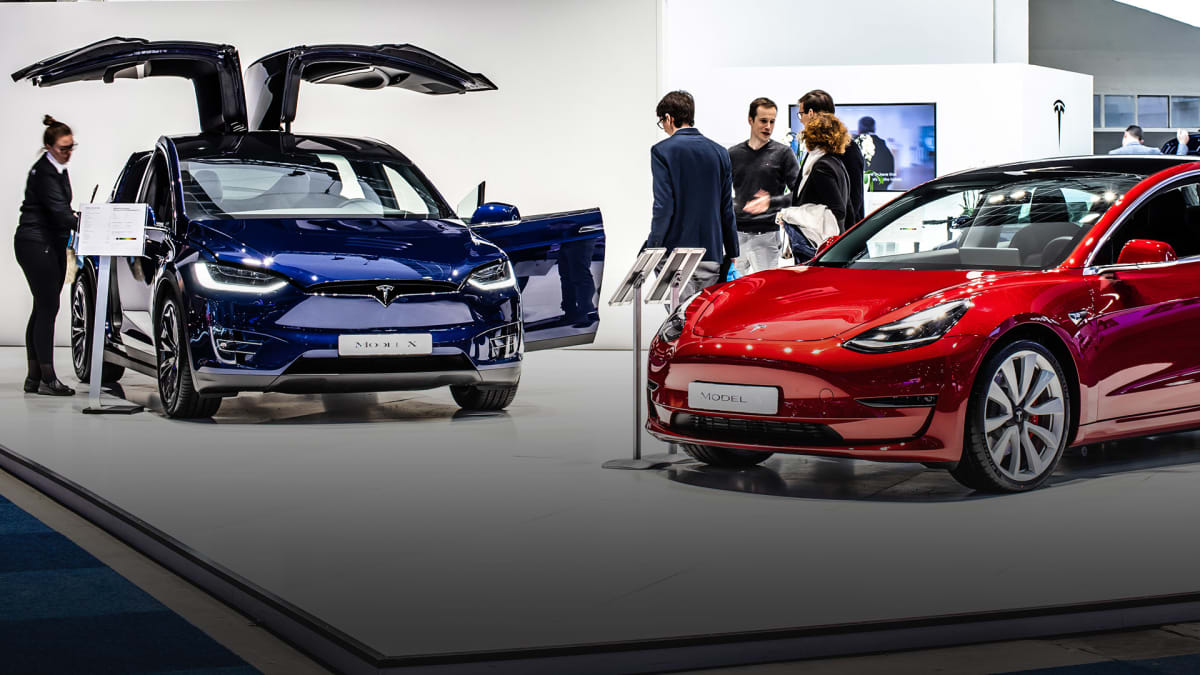
Tesla is often seen as a unique case in the automotive industry.
There is certainly the fact that the manufacturer of electric vehicles has managed to take a considerable lead over all its rivals in the West.
Its share in the global passenger electric vehicle market was 13% in the third quarter of 2022, according to Counterpoint. Volkswagen, the second western carmaker in terms of sales of passenger electric vehicles has only a market share of 4%.
Apart from the Chinese automakers, in particular BYD whose major shareholder is the legendary investor Warren Buffett, Tesla has almost no rival in the West. For many consumers in North America and Europe, electric vehicles sometimes come down to Tesla.
This domination is reflected not only in sales figures but above all in earnings. The Austin, Texas-based company has profit margins not found in the automotive industry. Such margins are found among tech groups.
Tesla's Profit Margins
Tesla's automotive gross margin was 28.5% last year, according to its annual report. To compare, Ford had an adjusted margin before interest and taxes of 6.6%, while GM said its adjusted Ebit margin in North America was 10.1% in 2022.
Between 2015–2020, the average profit margin for major automotive companies worldwide was nearly 7.5%, according to a report from ZT Corporate analyst Azhar Hirani.
"Profitability varies from company to company, but generally, premium car brands, like BMW, will observe higher profit margins than general and budget brands," Hirani said. "There are, however, exceptions to this rule, such as Volkswagen and Toyota, which both show potential for profitability."
More often than not, critics of Tesla and Musk point out that the company benefits from having lower costs than legacy carmakers. GM, Ford, Volkswagen and other carmakers have costs related to their manufacturing activities of gasoline cars. To this must be added the costs related to their dealer networks, etc. Tesla has no dealerships. The company sells its cars --- the Model 3 sedan, Model S sedan, Model Y SUV and Model X SUV --- directly to consumers. Tesla also does not advertise unlike its rivals who spend millions of dollars on marketing.
Last year, for example, Ford's total costs rose 15% last year, while GM's rose 24.4%. Tesla's operating expenses edged up 1.6%.
Musk, however, believes it's not just about reducing costs. For the billionaire, the secret of his firm's long-term profitability is also based on the product, in other words the vehicles developed. This is what he just said in a thread on Twitter.
"Large incumbent carmakers sell their cars at low to zero true margin," posted, on Feb. 11, a Twitter account that regularly posts statements from the Techno king, as Musk is known at Tesla. "Most of their profit is selling replacement parts to their fleet, of which 70% to 80% are past warranty. Like razors & blades."
The statement ends with: "New car companies lack this advantage. Also lack sales & service infrastructure."
Musk made this statement on Sept. 6, 2021.
Cash Machine
When he revisited his own quote, Musk took the opportunity to elaborate further.
"This is the fundamental reason why Tesla was the first new American car company to reach sustained positive cash flow since Chrysler ~100 years ago," the billionaire said on Feb. 11. "The product has to be compelling enough to overcome a fundamental cost disadvantage."
Basically it's all about the car. It is true that the design of Tesla vehicles differs from other brands both outside and inside. The lines are pure and simple. The Tesla vehicle prides itself on offering a completely different experience to its users not only with its power and the technologies it embeds, but also with its sleek and slightly futuristic design, which breaks the stereotype of electric cars.
Tesla also relies heavily on interior volume and the unprecedented feeling of space.
In addition, Musk and Tesla innovated by introducing the over-the-air delivery of software updates in vehicles with new features and functionality. When an update comes available, vehicle owners are notified and given instructions on how to do it themselves. This keeps their vehicles up-to-date with the latest innovations and gives the car manufacturer a steady source of income through subscriptions for the service updates.
The automaker increased its free cash flow by 51% last year to $7.6 billion despite huge investments in new factories, factory expansion, and new tooling. As a result, the company's total cash and investments increased $1.1 billion sequentially in Q4 to $22.2 billion.
Tesla therefore has an important war chest in case of need.
"We have sufficient liquidity to fund our product roadmap, long-term capacity expansion plans and other expenses," the carmaker said on Jan. 25. "Furthermore, we will manage the business such that we maintain a strong balance sheet during this uncertain period."







